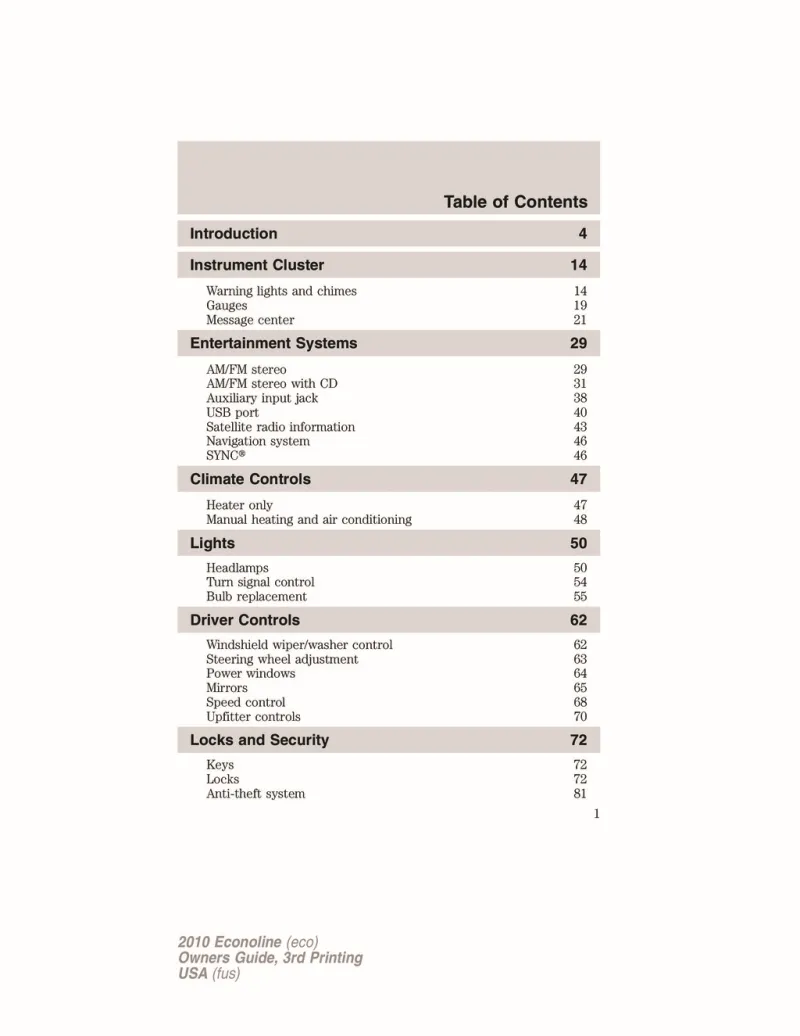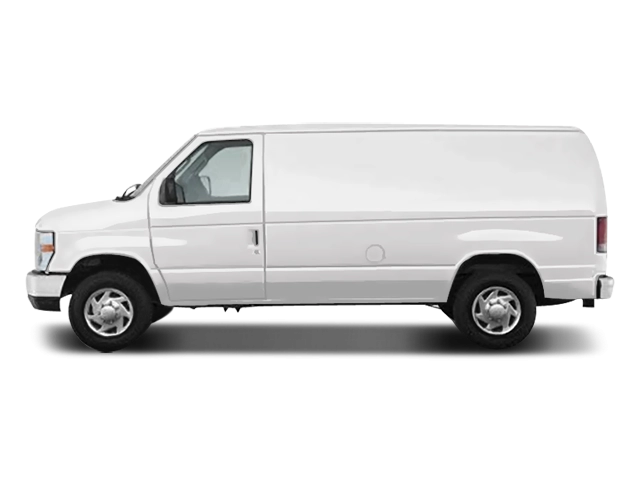2010 Ford E150 Owner's Manual

Table of Contents
2010 Ford E150 Overview
Introduction
The 2010 Ford E150 stands as a stalwart in the lineup of full-size vans, designed for families and commercial users alike. Renowned for its versatility and robust construction, the E150 effortlessly transitions from a workhorse to a family hauler. With its spacious interior, strong powertrain options, and a range of features, this van delivers reliability and comfort to meet diverse needs.
Powertrains
The 2010 Ford E150 is powered by a pair of capable engines, ensuring that it can handle various driving scenarios. The standard option is a 4.6-liter V8 engine, generating 292 horsepower and 320 lb-ft of torque. For those needing extra muscle, the optional 5.4-liter V8 engine offers an impressive 305 horsepower and 340 lb-ft of torque. Both engines are paired with a smooth-shifting 4-speed automatic transmission, providing confidence on the road and efficiency when needed.
Trims
Features
When it comes to features, the 2010 Ford E150 doesn't disappoint. Standard features include air conditioning, power windows, and a CD player, while upper trims add conveniences like cruise control, upgraded audio systems, and more advanced safety features. The spacious cargo area also benefits from configurable seating, making it easy to adapt for passengers or cargo as needed.
Owners Manual
The owner's manual for the 2010 Ford E150 serves as an essential guide for maximizing your vehicle experience. It covers important topics such as maintenance schedules, operational tips, and troubleshooting advice, ensuring that owners can keep their E150 running smoothly and efficiently for years to come.
User manual download
The Ford E150 owner manual for the 2010 model year is to be found in PDF downloadable format on this page. The owner manual for the model year 2010 is free and in English, but the repair manuals are usually not easy to get and may cost more.
Manual Questions
Fill the form below and someone will help you!

